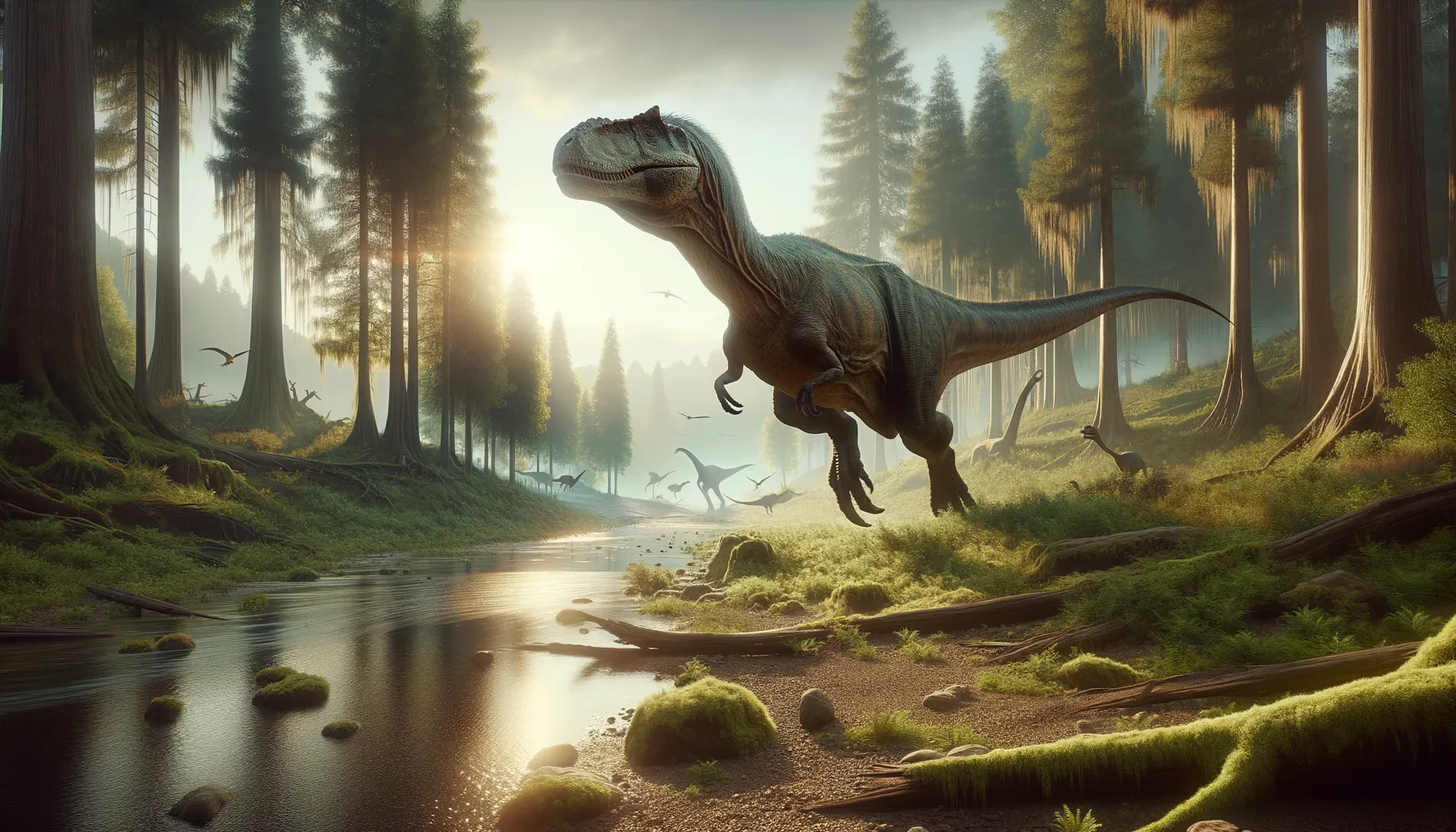
Thescelosaurus
Swift survivor of the Cretaceous plains.
Period
Cretaceous
Length
Roughly 4 meters long.
Height
Approximately 1.2 meters tall.
Weight
About 300 kilograms.
Thescelosaurus was a small, herbivorous dinosaur that roamed North America during the late Cretaceous period. Its name means 'marvelous lizard', and it is known for its well-preserved fossils, which provide significant insights into dinosaur physiology and behavior. As an agile plant-eater, it thrived in a variety of environments, from forests to floodplains. With a robust body and strong legs, it was well-adapted to its terrestrial lifestyle.
Diet
Thescelosaurus was herbivorous, grazing on a variety of plants including ferns, cycads, and conifers. It likely used its beak-like mouth to strip foliage effectively.
Hunting
Being a herbivore, it did not hunt. Its survival strategies focused on avoiding predators and efficiently gathering plant material.
Environmental challenges
Thescelosaurus faced challenges from predators like theropods and changing environmental conditions. It thrived in diverse habitats that could experience climatic shifts, affecting food availability. Natural disasters, such as volcanic eruptions, could also have posed significant threats to its existence.
Speed
Moderate, agile for avoiding predators.
Lifespan
Estimated to be around 20-30 years.
First discovery
First discovered in Wyoming in 1891.
Fun Facts
- Thescelosaurus was a small, plant-eating dinosaur that lived around 66 million years ago, just before the dinosaurs went extinct.
- The name 'Thescelosaurus' means 'marvelous lizard', reflecting the excitement scientists felt when they first discovered its fossils.
- Thescelosaurus had a long, pointy tail which likely helped it balance while walking on its two hind legs.
- Fossils of Thescelosaurus have been found with skin impressions, showing that it had a rough, pebbly texture.
- This dinosaur was about the size of a large dog, making it relatively small compared to its gigantic dinosaur relatives.
- Thescelosaurus had cheek-like structures that may have helped it hold and chew plants more efficiently.
- Though it lived on land, some scientists believe Thescelosaurus may have been a good swimmer based on its body shape.
Growth and Development
Thescelosaurus hatched from eggs and grew relatively quickly to avoid predation. Its development included a gradual increase in size and strengthening of its leg muscles, allowing it faster movement. This rapid growth phase helped ensure survival in its predator-dense environment.
Habitat
Thescelosaurus inhabited areas that were lush and provided ample vegetation. It was well-suited to floodplain environments, which offered plenty of food resources. Forested areas also provided both food and cover from predators.
Interaction with other species
Thescelosaurus likely shared its habitat with other herbivorous dinosaurs and smaller mammals. These interactions were mostly peaceful as they foraged alongside each other. However, predatory dinosaurs posed a constant threat, requiring vigilance and defense mechanisms.
Natural lifespan
Thescelosaurus could live up to 30 years in the wild.
Reproduction
Reproduction involved laying eggs, potentially in communal nesting grounds for protection. Parental care might have been limited, with hatchlings quickly adapting to fend for themselves post-hatching.
Social behaviour
Thescelosaurus might have lived in small groups for protection, although larger herds would have used significant resources. Group living provided advantages like increased vigilance against predators.
Fossil locations
Fossils of Thescelosaurus have been found mostly in North America, with significant finds in Wyoming, Montana, and South Dakota. These discoveries highlight its wide range and adaptability to different environmental conditions within the continent.
